 W
WSir Robert de Ashton, also called "Robert Assheton" or "Robert de Assheton", was a civil, military, and naval officer under Edward III of England who achieved distinction alike in court and camp, by land and by sea.
 W
WJohn Beaumont, 4th Baron Beaumont KG (1361–1396) was an English military commander and Admiral who served in the Hundred Years' War against the partisans of Antipope Clement VII.
 W
WGuy de Bryan, 1st Baron Bryan, KG was an English military commander and Admiral.
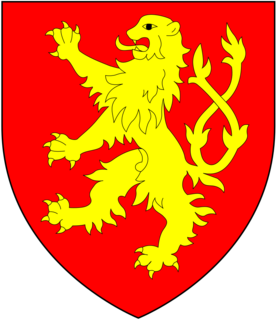 W
WBartholomew Burghersh, 1st Baron Burghersh, called "the elder", was an English nobleman and soldier, a younger son of Robert Burghersh, 1st Baron Burghersh and Maud Badlesmere, sister of Bartholomew Badlesmere, 1st Baron Badlesmere. He was the father of Bartholomew Burghersh the younger.
 W
WSir Simon de Burley, KG was holder of the offices of Lord Warden of the Cinque Ports and Constable of Dover Castle between 1384–88, and was a Knight of the Garter.
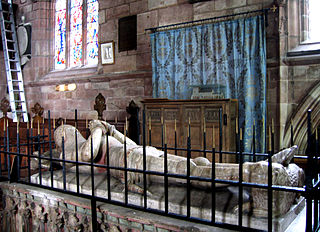 W
WSir Hugh Calveley was an English knight and commander, who took part in the Hundred Years' War, gaining fame during the War of the Breton Succession and the Castilian Civil War. He held various military posts in Brittany and Normandy. He should not be confused with his nephew, also Sir Hugh Calveley, who died in June 1393 and was Member of Parliament for Rutland.
 W
WReynold Cobham, 1st Baron Cobham of Sterborough, KG (c.1295–1361) was a medieval English knight and diplomat.
 W
WSir Philip Courtenay, of Powderham, Devon was the fifth son of Hugh Courtenay, 10th Earl of Devon (1303–1377). He was the founder of the cadet dynasty known as "Courtenay of Powderham", seated at the manor of Powderham, until then a former Bohun manor of little importance, whilst the line descended from his elder brother, the Earls of Devon of the mediaeval era, continued to be seated at Tiverton Castle and Okehampton.
 W
WJohn Botetourt, 1st Baron Botetourt was an English military commander and admiral in the 13th and 14th centuries.
 W
WJohn Devereux, 1st Baron Devereux, KG, was a close companion of Edward, the Black Prince, and an English peer during the reign of King Richard II.
 W
WThomas Beaufort, Duke of Exeter was an English military commander during the Hundred Years' War, and briefly Chancellor of England. He was the third of the four children born to John of Gaunt, Duke of Lancaster, and his mistress Katherine Swynford. To overcome their problematic parentage, his parents were married in 1396, and he and his siblings were legitimated in 1390 and again in 1397. He married the daughter of Sir Thomas Neville of Hornby, Margaret Neville, who bore him one son, Henry Beaufort. However, the child died young.
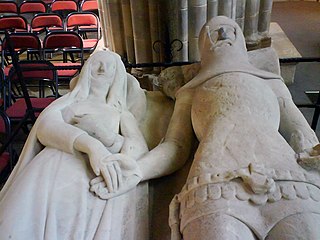 W
WRichard Fitzalan, 3rd Earl of Arundel, 8th Earl of Surrey was an English nobleman and medieval military leader and distinguished admiral. Arundel was one of the wealthiest nobles, and most loyal noble retainer of the chivalric code that governed the reign of Edward III of England.
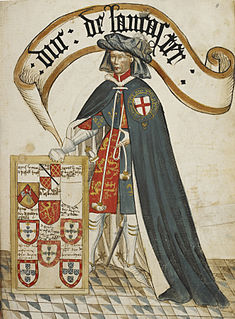 W
WHenry of Grosmont, 1st Duke of Lancaster was an English statesman, diplomat, soldier, and Christian writer. The owner of Bolingbroke Castle in Lincolnshire, Grosmont was a member of the House of Plantagenet, which was ruling over England at that time. He was the wealthiest and most powerful peer of the realm.
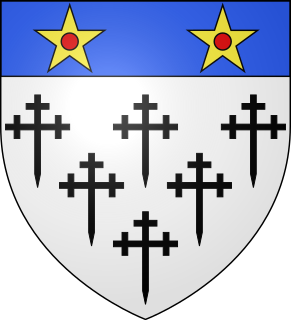 W
WWilliam de Clinton, 1st Earl of Huntingdon and Lord High Admiral, was the younger son of John de Clinton, 1st Baron Clinton (d.1312/13) of Maxstoke Castle, Warwickshire, and Ida de Odingsells who was the granddaughter of Ida II Longespee. The surname Clinton came from the lordship of Clinton in Oxfordshire, given to them at the Conquest. Geoffrey de Clinton was Lord Chamberlain and Treasurer of Henry I, while Roger de Clinton was Bishop of Coventry 1127–1148.
 W
WWilliam Latimer, 4th Baron Latimer, KG was an English noble, soldier and diplomat. After serving in France and for the household of Edward III, he was impeached during the Good Parliament of 1376, the earliest recorded impeachment in the Parliament of England.
 W
WWalter Manny,, 1st Baron Manny, KG, soldier of fortune and founder of the Charterhouse, was from Masny in Hainault, from whose counts he claimed descent. He was a patron and friend of Froissart, in whose chronicles his exploits have a conspicuous and probably an exaggerated place.
 W
WJohn Neville, 3rd Baron Neville, was an English peer and soldier.
 W
WWilliam de Bohun, 1st Earl of Northampton, KG was an English nobleman and military commander.
 W
WHenry Percy, 1st Earl of Northumberland, 4th Baron Percy, titular King of Mann, KG, Lord Marshal was the son of Henry de Percy, 3rd Baron Percy, and a descendant of Henry III of England. His mother was Mary of Lancaster, daughter of Henry, 3rd Earl of Lancaster, son of Edmund, Earl of Leicester and Lancaster, who was the son of Henry III.
 W
WSir Richard Pembridge, KG, was one of the earliest appointed Knights of the Garter.
 W
WWilliam Montagu, 2nd Earl of Salisbury, 4th Baron Montagu, King of Mann, KG was an English nobleman and commander in the English army during King Edward III's French campaigns in the Hundred Years War. He was one of the Founder Knights of the Order of the Garter.
 W
WJohn Beaufort, 1st Marquess of Somerset and 1st Marquess of Dorset, later only 1st Earl of Somerset, was an English nobleman and politician. He was the first of the four illegitimate children of John of Gaunt (1340–1399) by his mistress Katherine Swynford, whom he later married in 1396.
 W
WMichael de la Pole, 1st Earl of Suffolk, 1st Baron de la Pole, of Wingfield Castle in Suffolk, was an English financier and Lord Chancellor of England. His contemporary Froissart portrays de la Pole as a devious and ineffectual counsellor who dissuaded King Richard II from pursuing a certain victory against French and Scottish forces in Cumberland and fomented undue suspicion of that king's uncle John of Gaunt, 1st Duke of Lancaster.
 W
WRobert Ufford, 1st Earl of Suffolk, KG was an English peer. He was created Earl of Suffolk in 1337.
 W
WAdmiral Sir William de Leybourne, was an English Knight and Military Commander.
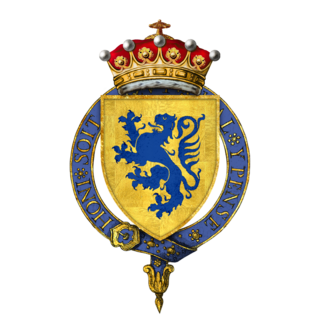 W
WThomas Percy, 1st Earl of Worcester, KG was an English medieval nobleman and naval commander best known for leading the rebellion with his nephew Henry Percy, known as 'Harry Hotspur', and his elder brother, Henry Percy, 1st Earl of Northumberland.
 W
WEdmund of Langley, 1st Duke of York, KG was the fourth surviving son of King Edward III of England and Philippa of Hainault. Like many medieval English princes, Edmund gained his nickname from his birthplace: Kings Langley Palace in Hertfordshire. He was the founder of the House of York, but it was through the marriage of his younger son, Richard of Conisburgh, 3rd Earl of Cambridge, to Anne de Mortimer, great-granddaughter of Edmund's elder brother Lionel of Antwerp, 1st Duke of Clarence, that the House of York made its claim to the English throne in the Wars of the Roses. The other party in the Wars of the Roses, the incumbent House of Lancaster, was formed from descendants of Edmund's elder brother John of Gaunt, 1st Duke of Lancaster, Edward III's third son.
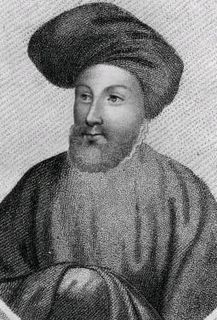 W
WEdward, 2nd Duke of York, was an English nobleman, military commander and magnate. He was the eldest son of Edmund of Langley, 1st Duke of York, and a grandson of King Edward III of England. He held significant appointments during the reigns of Richard II, Henry IV, and Henry V, and is also known for his translation of the hunting treatise The Master of Game. He was killed in 1415 at the Battle of Agincourt whilst commanding the right wing of the English army